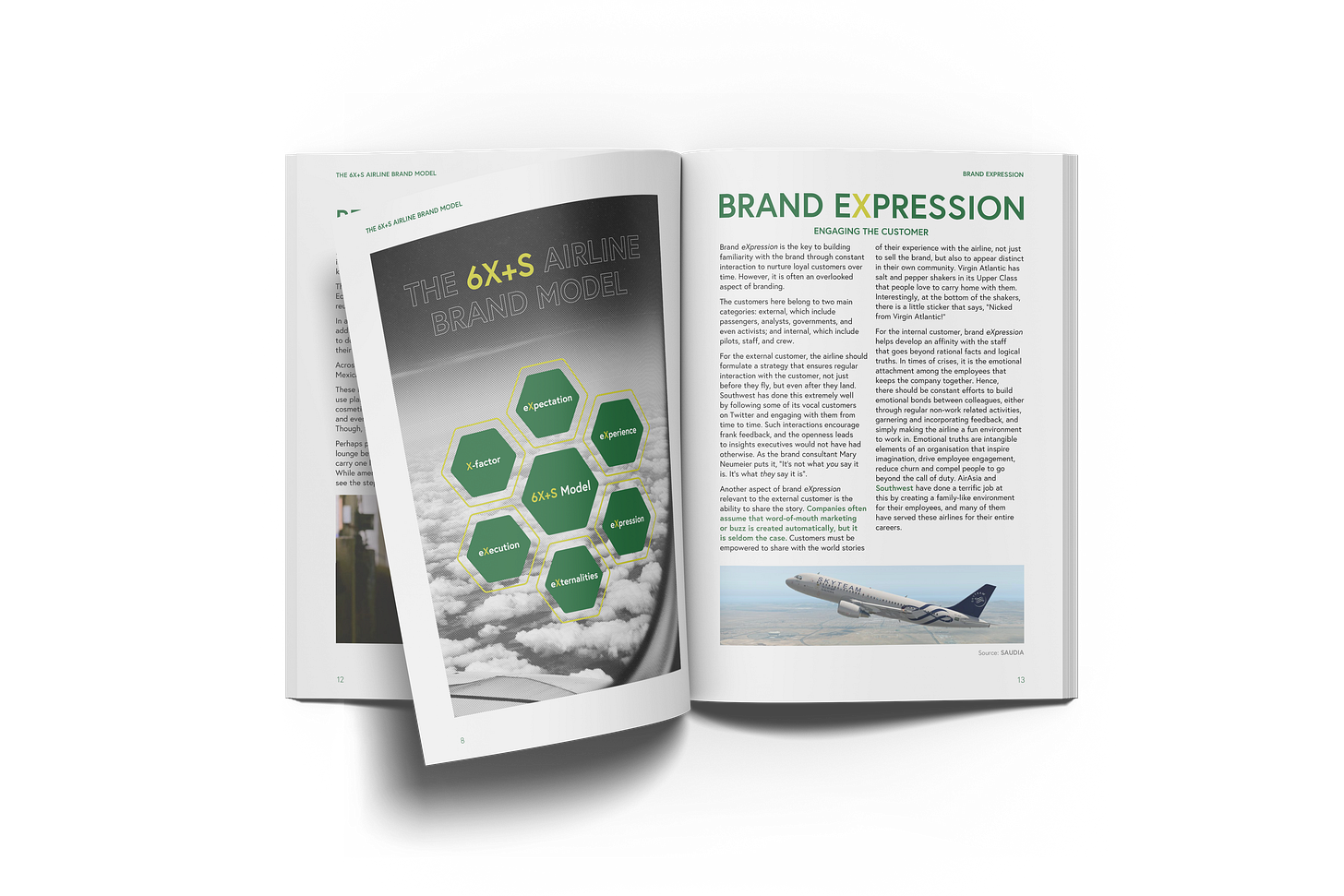Brand eXpression is the key to building familiarity with the brand through constant interaction to nurture loyal customers over time. However, it is often an overlooked aspect of branding.
The customers here belong to two main categories: external, which include passengers, analysts, governments, and even activists; and internal, which include pilots, staff, and crew.
For the external customer, the airline should formulate a strategy that ensures regular interaction with the customer, not just before they fly, but even after they land.
Southwest has done this extremely well by following some of its vocal customers on Twitter and engaging with them from time to time. Such interactions encourage frank feedback, and the openness leads to insights executives would not have had otherwise. As the brand consultant Mary Neumeier puts it, “It’s not what you say it is. It’s what they say it is”.
Another aspect of brand eXpression relevant to the external customer is the ability to share the story. Companies often assume that word-of-mouth marketing or buzz is created automatically, but it is seldom the case. Customers must be empowered to share with the world stories of their experience with the airline, not just to sell the brand, but also to appear distinct in their own community.
Virgin Atlantic has salt and pepper shakers in its Upper Class that people love to carry home with them. Interestingly, at the bottom of the shakers, there is a little sticker that says, “Nicked from Virgin Atlantic!”
For the internal customer, brand eXpression helps develop an affinity with the staff that goes beyond rational facts and logical truths.
In times of crises, it is the emotional attachment among the employees that keeps the company together. Hence, there should be constant efforts to build emotional bonds between colleagues, either through regular non-work related activities, garnering and incorporating feedback, and simply making the airline a fun environment to work in.
Emotional truths are intangible elements of an organisation that inspire imagination, drive employee engagement, reduce churn and compel people to go beyond the call of duty. AirAsia and Southwest have done a terrific job at this by creating a family-like environment for their employees, and many of them have served these airlines for their entire careers.
Case Study - Saudia’s In-Flight Sustainability Lab
SAUDIA, the national flag carrier of the Kingdom of Saudi Arabia, created the world’s first in-flight sustainability lab. This involved guests on a Jeddah to Madrid flight submitting ideas on how air travel could become greener.
Passengers onboard flight SV 227 were invited to submit ideas on greener air travel, covering the flight itself, time spent at the airport and arriving at the destination.
After the meal service, each passenger was given three post-it notes (printed on recycled paper), where they wrote down their suggestions, before handing the notes back to the cabin crew. The notes were then displayed on the bulkhead for all passengers to interact with.
Image source: Saudia Media Hub
The in-flight lab was mirrored by a similar ‘ideas initiative’ that took place at SAUDIA’s headquarters in Jeddah, involving the airline’s employees. In total, 150 unique ideas were submitted by guests onboard flight SV 227 and SAUDIA team members. Run in partnership with SimpliFlying, it was the first time an airline partnered with its customers to make flying greener. An in-flight Lab elevated the conversation and helped rebuild trust in travel as passengers had a say in creating a greener future for aviation.
For this effort, SAUDIA won the award for best customer engagement award by Skyteam for its Sustainable Flight Challenge. Brand eXpression is about engagement. Saudia demonstrated how an airline can involve passengers and employees in a productive conversation about sustainable travel.
This is an extract from our “6X+S Airline Brand Model” whitepaper which presents a new framework for airlines to build lasting brands in the age of sustainability. Download the whitepaper to explore the rest of the 6X+S model concepts and the accompanying case studies in our whitepaper.




